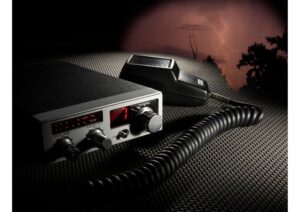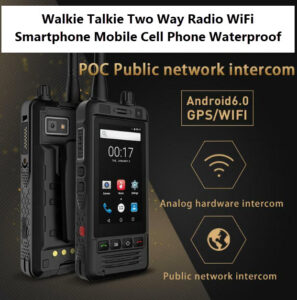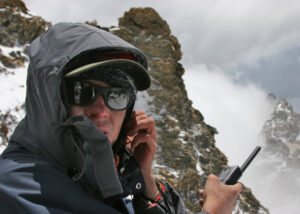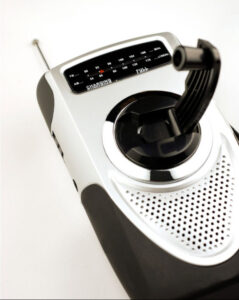Emergency Communication Gear: The Overlooked Lifesaver in Your Survival Prepping
So, you’ve probably stockpiled food, water, and maybe you even have some fancy gadgets for renewable energy. That is very good, you’re on the right track. But have you considered how you’re going to communicate with your loved ones when the grid goes down? You see, many people only think about keeping their smartphones charged. Solar chargers are great and all, but they won’t help you if the local cell towers are out of commission.
Imagine this: When disaster strikes, your family might not all be conveniently at home. They could be scattered at work, school, or other places. In a world of instant messaging and video calls, it’s easy to overlook how crucial basic communication can become in emergencies. Remember 9/11? The cell networks were overloaded, leaving people unable to confirm the safety of their loved ones or coordinate emergency plans.
What if natural disasters impact power grid transmission, cell phone towers stop working altogether? Or in a situation of civil unrest, some groups may sabotage communication and blow-up cell phone towers to cause widespread disruption and chaos. In an international conflict, communication will be hit first. And extremist groups are well documented to have plans to disrupt our communication to further their weird and whacky agendas.
You never want to gamble with your safety by assuming your current communication plan will work. You always want to have something sustainable and backup gear in case one method fails.
The Many Avenues of Emergency Communication
Now, the world of emergency communication isn’t as simple as buying a two-way radio and calling it a day. There’s a range of options to suit different needs and scenarios. So, let’s unpack some of these options to give you a comprehensive view.
Satellite Phones: The Wilderness Communicator
You might think, “Why do I need a satellite phone?” Well, these devices aren’t just for globe-trotting adventurers or spies in movies. Because of the instability of cell phone towers, you may want to invest in some satellite phones that rely on orbiting satellites rather than land based cell towers so that you can communicate with your loved ones.
They provide a lifeline when conventional cell towers fail. Yes, they can be expensive. But think of them as an insurance policy for your peace of mind. If you’re someone who ventures into the wilderness or remote areas frequently, this is as essential as your first aid kit.
Walkie Talkies: Simple Yet Effective
Now, let’s say you’re not straying far from home or your emergency plans involve staying put in your neighborhood. Walkie-talkies are the go-to communication device. They’re affordable, easy to use, and surprisingly effective for short-range communication. Great for staying in touch while you’re fortifying your home or coordinating neighborhood resources.
Family Radio Service (FRS) Radios: The Versatile Option
FRS radios are like the jack-of-all-trades in emergency communication. They offer a bit more range compared to walkie-talkies but are still very user-friendly. You won’t need an FCC license to operate them, and they often come packed with useful features like weather alerts. Ideal for those who want a little more from their radios without getting into the complexities of more advanced options.
Ham Radio: For the Long-Distance Conversations
If you’re committed to being as prepared as possible, you might consider getting a ham radio along with the required FCC license.

NOAA Weather Radio: When Listening is as Important as Speaking
Sometimes, the communication that you need would be incoming . You also want to know what’s happening around you. That’s where a hand-cranked NOAA weather radio comes in. In emergency scenarios, information can be as vital as food and water. This simple device keeps you connected to the world, offering updates on everything from weather changes to governmental alerts.
Cellular Boosters and Solar Chargers: A Little Extra for Your Smartphone
If you’re keen on sticking to your smartphone as a primary means of communication, don’t ignore the little extras that can make a difference. A cellular booster can amplify a weak signal, making your phone more reliable in areas with spotty coverage. Similarly, a high quality and robust solar charger can keep your phone powered when electricity is unavailable.
Low-Tech Tools: The Underappreciated Heroes
There’s also merit in low-tech solutions like flares, whistles, and signal mirrors. Sometimes you don’t need to convey information; you just need to signal for help. For moments when you simply need to alert people about your presence and possibly get rescued, you can use a variety of communication tools. Flares that you can ignite to send a distress signal are a perfect tool for this.
Many people carry a reflective mirror with them so that they can use the sun to signal to aircraft that they are in need of assistance. If you are on the ground, and there are people searching for survivors, you may want to have a whistle, a small air horn, or even some sort of bell that can let people know where you are.
These tools are simple, reliable, and effective.
Making Smart Choices: What to Consider When Shopping
Budget is an issue for everyone, but your decision-making shouldn’t stop at the price tag. Different gadgets offer varying ranges and functionalities. And don’t forget, the device you choose needs to work in your specific environment. Geography, weather, and even local architecture can affect signal strength and clarity.
Power and Durability: The Two Pillars of Utility
Your communication gear should ideally be operable without a constant power source. Look for devices that can be charged through alternative means like solar power or hand cranks. Durability is another essential factor. Your gear should robustly withstand the elements, be it rain or rugged terrain. 
Keep Your Gear in Top Shape: Maintenance is Key
You wouldn’t neglect your car’s maintenance, right? And just as you check your food storage for signs of pests or spoilage, and rotate your supplies out, you want to maintain your communication gear and check it periodically to make sure it is in good working order.
This can be done on a weekly or monthly basis, and you want to look for any type of corrosion or damage to your communication gear so that you can replace any element that has been compromised.
If you take your communication gadgets out on a camping trip or hike, make sure that you clean it when you return home and keep it in good working condition. Store it in a place that will not damage it, and have a Faraday bag that can shield any of your electronic devices for communication from an electromagnetic pulse.
There may be some of your gear that is digital and will require a software update, and you always want to take care of this on a regular basis so that you’re not caught months down the road with a piece of equipment that is far outdated when a survival event
Regular check-ups can help you spot and fix problems before they become life-threatening issues. Whether it’s corrosion on your walkie-talkie’s battery terminals or outdated software on your satellite phone, timely maintenance is crucial.
Training: The Missing Link in Most Prepping Plans
All the gear in the world won’t help you if your family is not well practiced and using it. They need to know how to operate the equipment, how to troubleshoot if something isn’t working, and what to use as a backup means of communication if the primary one fails.
It is for those reasons that you need to hold regular drills with your family. Furthermore, many people rely on their smartphones to give them phone numbers, addresses, and full names. You want to have communication lists printed out and preferably laminated so that your list of contacts is preserved if you can’t use your smartphone.
Keep in mind that sometimes you have to communicate in a situation where you are under some sort of threat. Your family needs to have a code that can be used to signify that there is danger, even when they can’t be transparent about it.
Establish emergency codes for situations where speaking freely might not be possible. Ensure everyone understands your backup plans and alternatives
There you have it. When it comes to survival prepping, your stash of food, water, and tools is incomplete without a robust communication plan. It’s like the connective tissue in the body of your preparations. It’s the system that will help you coordinate, locate, and most importantly, keep your loved ones safe. So, make the wise choice today and invest in high quality, reliable and robust communication gear.
Now that you know about the importance of good communication gear it is time to move to the next article in our series. Part 11 – Why You Need to How to Learn About First Aid.
Missed Part 9? No problem, you can read it here: Part 9 – How To Educate Yourself About Building Shelters





